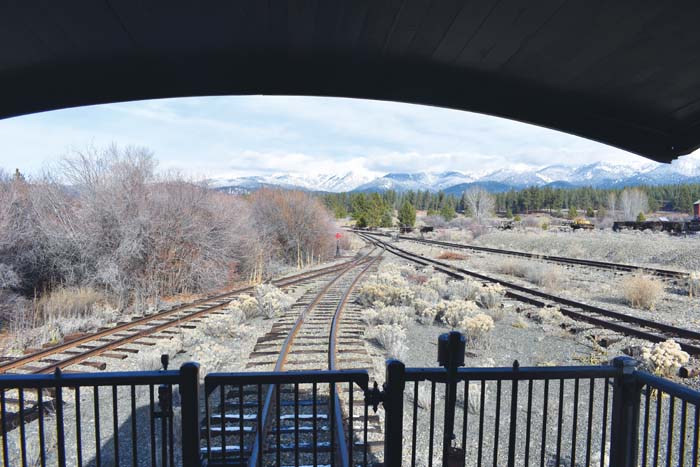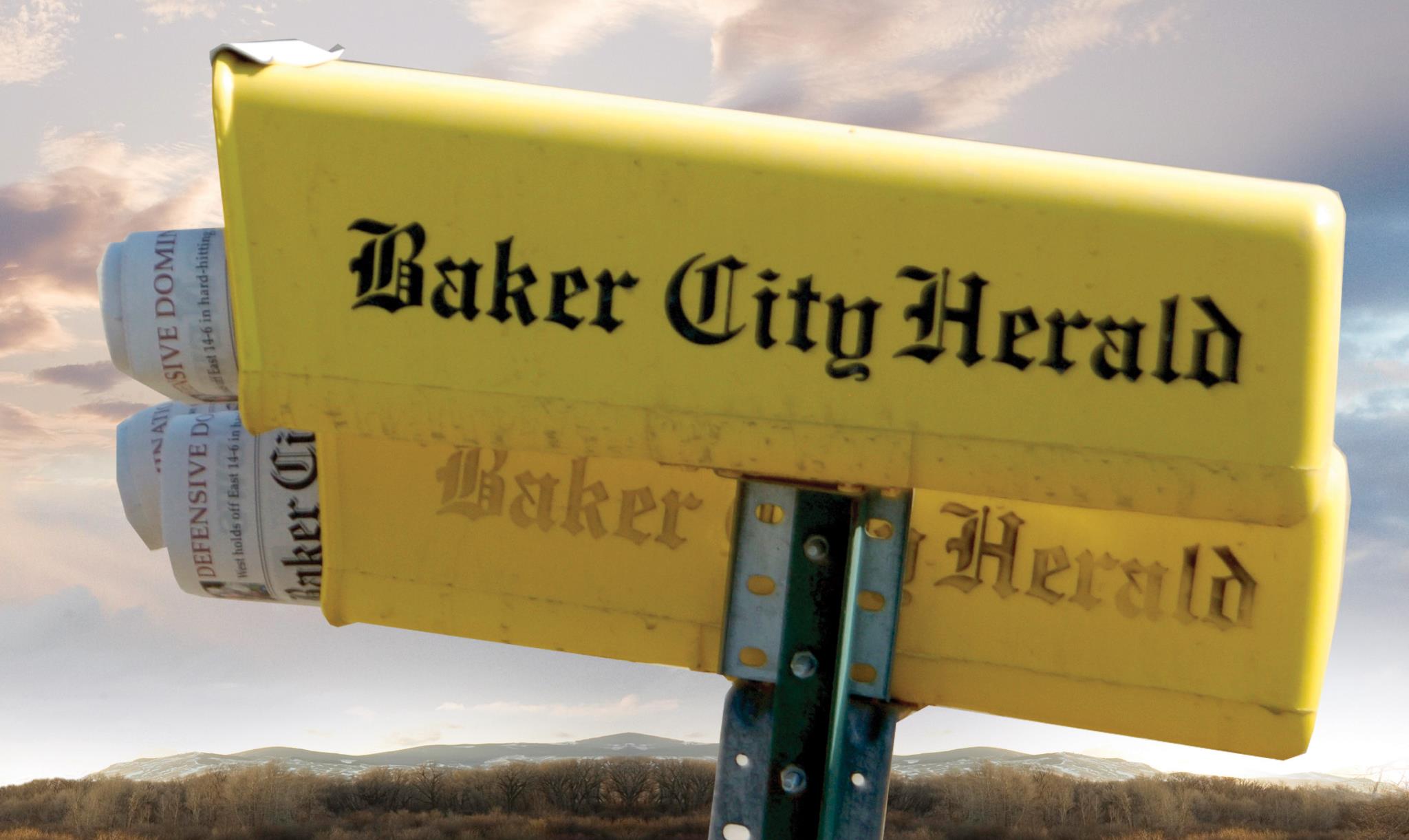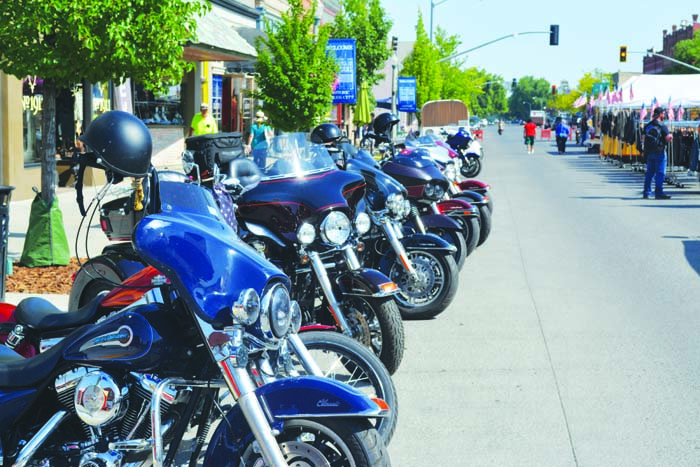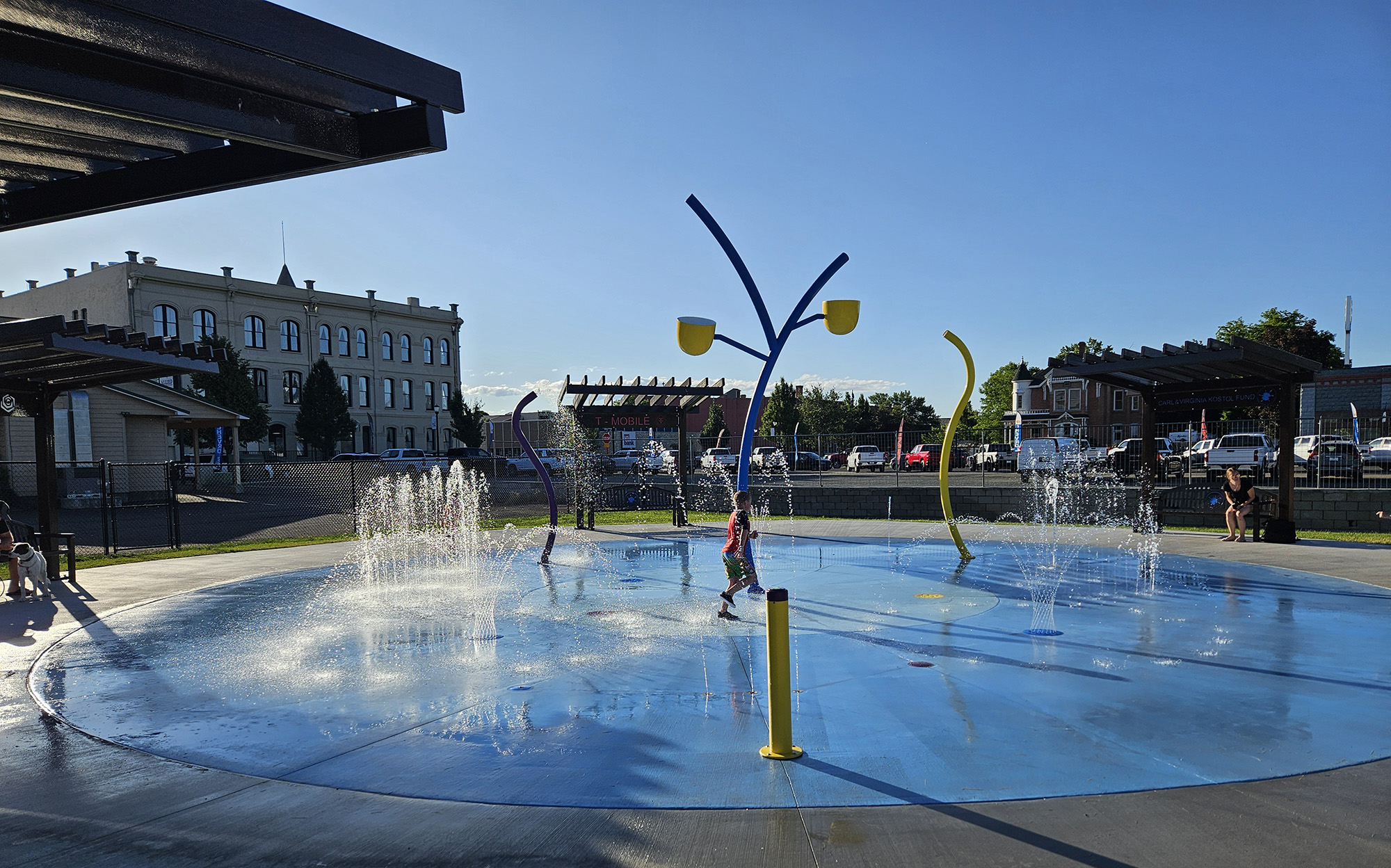Steaming along: Sumpter Valley Railroad continues repairs to engines, plans Christmas trains
Published 10:00 am Thursday, November 21, 2024

- An expansive view of the Elkhorn Mountains is seen from the back of the Sumpter Valley Railroad. Although its typical season is summer, the train runs special events in October and December.
MCEWEN — Jace Svaty speaks of the hulking black train engine with a type of affection usually reserved for a cantankerous but lovable family member.
“She won’t run unless you say ‘you’re beautiful, you’re going to do great,'” he said with a grin. “It’s clanky, it’s temperamental. I love it.”
The object of his words sat silent in the cold shop at the Sumpter Valley Railroad’s McEwen Depot on Nov. 16. But Svaty, a volunteer with the SVRR, knows the power of this locomotive.
“They breathe,” he said. “They’re the closest thing to a living human being man has ever created.”
Preserving history
The steam-powered Sumpter Valley Railroad began in 1890 and eventually ran 80 miles from Baker City to Prairie City. Mainly built to haul timber, the railroad operated on a narrow-gauge track — three feet wide — that wound its way into the mountains of Eastern Oregon on a network of mainlines and spurs.
It hauled passengers, too.
The use of the railroad declined in the 1930s and by 1947 most of the railway had been abandoned.
In 1971, a group of volunteers decided to save what they could of this history and formed the Sumpter Valley Railroad Restoration Inc. A crew of volunteers rebuilt a short portion of the original track, and the first train left McEwen Depot in 1976.
“People came from around the world to ride,” said Kim Svaty, depot manager as well as Jace’s mother.
The track was extended to Sumpter by 2002 for a total of six miles, one way.
Today the SVRR has 127 members, and about 20 to 30 who are active volunteers. Work over the past 53 years has depended on volunteer labor and funding from donations and grants.
Some of the newest improvements include a building for the railroad’s archives, new concrete near the depot so it’s easier to load wheelchair users onto the train, new car shop doors, track and deck extensions at Sumpter, a new floor for the McEwen Depot, and a new roof on both the restrooms and picnic shelter.
As for those hulking engines that are the heart of this operation — well, it takes expertise and special parts to keep those machines running.
“Everything is specialized,” Jace said. “You can take them apart, look at it, and see how it goes back together.”
It just takes a bit of effort to get moving — two to three days when it’s cold.
“Two days before a ride you fire up the engine and have to relubricate everything, fill it with water, then light a fire so it doesn’t refreeze,” Svaty said.
These steam engines guzzle water. Svaty said No. 19, which is fueled by oil, can go through 1,500 gallons of water every 12 miles.
Restoring the railroad meant searching for narrow-gauge engines, cars and cabooses — and many are original to the Sumpter Valley.
“We’ve gained back three of them — number four got destroyed,” Jace said of the cabooses.
Of the train cars, where passengers sit as they ride between McEwen and Sumpter, one — Coach 20 — is 130 years old and original to this railroad.
“It’s a really unique car,” Jace said.
It’s almost entirely made of wood.
“The only metal are the nails, screws and wheels underneath,” he said.
This coach was saved from the Willamette Valley, where a farmer gutted it, then cut it half.
“One half was a woodshed, one half was a chicken coop,” Jace said.
Bringing Coach #20 home was made possible by a 1988 donation from Emma Eccles Jones, who was the daughter of the railroad founder David Eccles, according to SVRR history.
The engines
Although No. 19 looks a bit rough with fire tubes sticking out of its snout, Jace said it is only awaiting inspection approval from the Federal Railroad Administration before it can be put back together.
“Every 15 years a steam locomotive has to be completely stripped, inspected and retubed,” he said.
Full restoration of 19 started in 2021. It is original to the Sumpter Valley.
“It was one of the fastest with a top speed of 45, 50 miles per hour,” he said. “We call these the Cadillacs of locomotives.”
Originally a wood-burning engine, he said 19 was converted to oil when it was owned by the White Pass Railroad in Washington. This makes it better for summer runs, because oil doesn’t throw cinders out of the stack — a consideration when fire danger is high.
The Heisler No. 3 is 108 years old and burns wood. It is awaiting new metal for the tender, which was taken apart to address rust and thinning walls caused by holding water.
No. 3 weighs 90 tons, and Jace describes it as an “eight wheel drive truck.”
A temperamental truck.
“Steam engines are so much work, that’s why they went out,” he said. “This is a constant chore.”
The orange engine, known affectionately as the Great Orange Pumpkin, picks up the slack when the steam engines need repairs.
It is a diesel-electric engine built by General Electric.
“This is the first version of hybrid cars,” he said.
The engine was built in 1957 and worked in Panama for the American Fruit Company.
“It hauled bananas,” Jace said.
It came to Sumpter in 2007, and went into service in 2013. It is the only one running in North America.
“They are very unique,” he said.
And less fussy than the steam locomotives.
“It’s actually a push button start,” Jace said with a grin. “I can have it ready in about 30 minutes.”
Volunteers did add a snowplow, for when the diesel is used for Christmas trains.
“They didn’t need snowplows in Panama,” Jace said.
Membership and donations
All ages are welcome to become members of the SVRR, but volunteers must be 18 or older to work on trains or operate equipment.
Memberships are $20 for age 17 and younger, $35 general, $50 sustaining or $2,000 for a life member.
For information, send an email to info@sumptervalleyrailroad.org.
Donations help maintain the fleet of engines and train cars, and can be made online at sumptervalleyrailroad.org or mailed to P.O. Box 389, Baker City, OR 97814.
The Sumpter Valley Railroad runs Christmas trains every year. Although some are sold out, space is still available for the night train on Friday, Dec. 13, that leaves McEwen at 4 p.m., and the two trains on Sunday, Dec. 15, at 11 a.m. and 1:30 p.m.
For details and reservations, visit sumptervalleyrailroad.org.
Also, Sumpter’s holiday celebration is the same weekend, with a bazaar Dec. 14 and 15 from 9 a.m. to 5 p.m., and the Starlight Parade and tree lighting on Saturday, Dec. 14, at 5 p.m.
“They breathe. They’re the closest thing to a living human being man has ever created.”
— Jace Svaty, volunteer with the Sumpter Valley Railroad, talking about locomotives







